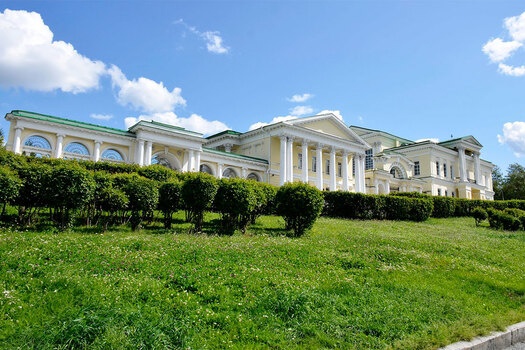We continue to research and discover the Urals capital with “Walking around Yekaterinburg with the Library”.
The Rastorguyev–Kharitonov Palace rightfully can be called one of the most beautiful architectural landmarks of Yekaterinburg. The palace is located on Voznesenskaya Hill (Voznesenskaya Gorka). It reveals fascinating panorama of the capital of the Urals.
The building of the palace began at the same time as the building of the Church of the Holy Ascension at the end of the 18th century. Originally the land belonged to the provincial secretary Sergei Isakov but he died in 1794 and the land plot with the unfinished building was bought by a merchant and industrialist Leo Rastorguyev. By 1814 Rastorguyev has already built two houses. The palace was built in classical style, which is described in great detail in Anatoly Ruskin's book “Classicism in the monuments of architecture of the Sverdlovsk region”, which can be found in our library at the circulation desk of Liberal Arts & Humanities (4 Turgeneva st., room 252).
By 1824 the palace passed into the hands of Rastorguyev’s son-in-law – Petr Kharitonov, who made the adjacent territories bigger and set up Kharitonov Park in English style there. That park became the first public garden in the whole city. Grown trees from the surrounding forests were specially brought for the park and a small artificial lake with a tiny island in the middle of it was created. The island had a rotunda.
There are a lot of rumors and legends surrounding the palace. Some of them even talk about underground passages. Alexey Tolstoy wrote about one of those legends in his story “Kharitonov’s gold”. According to the tale, workers engaged in the minting of gold coins lived in the basements there. Famous Ural writers Dmitry Mamin-Sibiryak in the novel “Privalov’s Millions” and Vladislav Krapivin in the book “Seven feet of the topsail wind” also mentioned the palace.
Nowadays there is a museum in the palace, but you can only access it with an excursion group. On the other hand, the Kharitonov’s park is open to all visitors. For instance, yearly the Water Lantern Festival takes place in the park with poets’ performing, live music and a fair.
Author: Elizaveta Kislitsina
Translator: Ksenia Khudyshkina
Translator: Ksenia Khudyshkina




